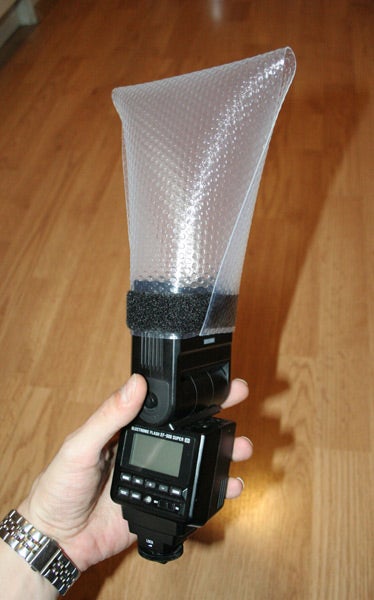Electronic flashes are easily one of the great innovations in photography, making it easier to get indoor photos.
But when you're ready to get past the harsh light coming from either on top of the camera or alongside it, there are a variety of ways to modify the light, either commercially or homemade, and go for a more artistic look.
In previous posts, we've talked about softboxes and reflectors take the edge off the flash's harsh light, and an adapter for macrophotography.
Today's installment deals with snoots, which turn the flash into a spotlight, putting a small relatively tight spot of light on a subject.
While a grid, which we talked about building earlier, may seem to do the same thing, there's a difference. The grid's honeycomb pattern not only directs the light into a tighter area, it also feathers the edges so it's not so harsh.
A snoot instead throws a sharply defined beam of light at its target. This can be good for creating a hairlight to separate your subject from a background or to create a shaft of light effect.
My DIY snoot consists of postal box cardboard formed around the flash head, creating a tube that funnels the light forward. While some have used Pringles potato chip cans for this purpose, I found it was too narrow to put my flash head in straight on, and the bouncing in the macro tube was not effective for long distance.
Now, to see how it worksFirst, a photo with the unmodified flash, to serve as the baseline.
With our DIY grid. See how it's a narrower beam but just fades off on the edges.
The snoot produces a tight, harsh light. If you wanted to create the look of a shaft of light, this would be an effective tool for the job.































